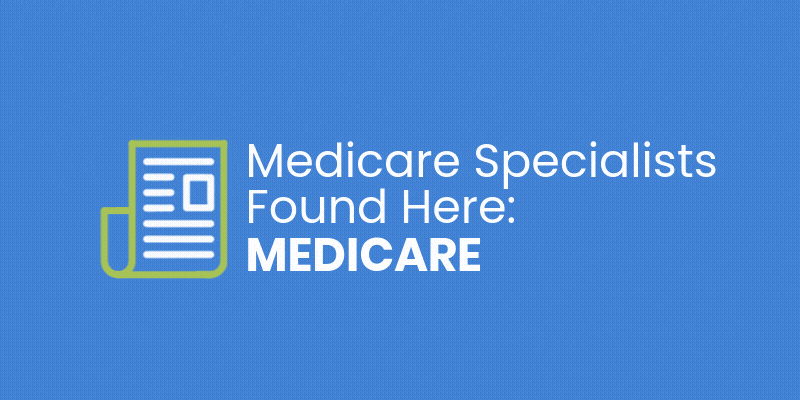
Medicare Part D is a crucial component of the Medicare program, providing prescription drug coverage to millions of Medicare beneficiaries. Understanding Medicare Part D is essential for managing your healthcare costs, especially if you take medications regularly. This guide will walk you through everything you need to know about Medicare Part D, including eligibility, coverage, costs, and enrollment.
What is Medicare Part D?
Medicare Part D is a prescription drug coverage plan offered through private insurance companies that are approved by Medicare. Unlike Medicare Parts A and B, which cover hospital and medical services, Medicare Part D is specifically designed to help cover the costs of prescription medications. These plans are available to everyone with Medicare and can either be a standalone plan (PDP) that works alongside Original Medicare or integrated into a Medicare Advantage plan with prescription drug coverage (MA-PD).
Who is Eligible for Medicare Part D?
Eligibility for Medicare Part D requires that you:
- Are Enrolled in Medicare Part A and/or Part B: To be eligible for a Medicare Part D plan, you must be enrolled in either Medicare Part A or Part B.
- Live in the Plan’s Service Area: You must reside in the service area of the Medicare Part D plan you wish to join. Each plan covers a specific geographic area, so it’s important to choose one that includes your location.
What Does Medicare Part D Cover?
Medicare Part D plans provide coverage for a wide range of prescription medications, but the specifics of what each plan covers can vary:
- Formulary: Each Medicare Part D plan has its own list of covered drugs, known as a formulary. The formulary categorizes drugs into different “tiers” which determine the cost-sharing for each medication. Lower-tier drugs typically have lower copayments, while higher-tier drugs have higher costs.
- Generic and Brand-Name Drugs: Medicare Part D plans cover both generic and brand-name prescription drugs. Generic drugs are usually placed on a lower tier with lower copayments, while brand-name drugs are often placed on higher tiers.
- Coverage for Common Conditions: Part D plans are required to cover a range of medications that treat common conditions, such as diabetes, high blood pressure, high cholesterol, and mental health conditions.
- Specialty Medications: High-cost specialty medications are typically placed on the highest tier and may have a higher coinsurance rate. Coverage varies by plan, so it’s important to compare plans if you require these types of medications.
Costs Associated with Medicare Part D
The costs of Medicare Part D can vary significantly depending on the plan and the medications you need. Here are the key cost components:
- Monthly Premium: Medicare Part D plans charge a monthly premium, which varies by plan and location. In 2024, the average premium for a standalone Medicare Part D plan is about $33. However, premiums can range from as low as $0 to higher amounts depending on the plan and additional features.
- Annual Deductible: Many Medicare Part D plans have an annual deductible that must be met before the plan begins to pay for covered medications. The maximum deductible in 2024 is $545, but some plans have lower or even no deductibles.
- Copayments and Coinsurance: After meeting the deductible, you may pay a copayment or coinsurance for each prescription. The amount varies depending on the drug’s tier. Lower-tier drugs generally have lower copayments, while higher-tier drugs or specialty medications may have a coinsurance rate, which is a percentage of the drug’s cost.
- Coverage Gap (Donut Hole): Once your total drug costs (including what you and your plan have paid) reach a certain limit, you enter the coverage gap, commonly known as the “donut hole.” In 2024, this limit is $4,660. During this phase, you pay a larger share of your drug costs until you reach the out-of-pocket threshold.
- Catastrophic Coverage: After your out-of-pocket costs reach the threshold of $7,400 in 2024, you enter the catastrophic coverage phase, where you only pay a small coinsurance or copayment for covered drugs for the rest of the year.
How to Enroll in Medicare Part D
Enrolling in Medicare Part D can be done during specific enrollment periods:
- Initial Enrollment Period (IEP): This is the seven-month period around your 65th birthday (three months before, the month of, and three months after your birthday). If you’re under 65 and qualify for Medicare due to disability, your IEP starts three months before your 25th month of receiving SSDI benefits and ends three months after.
- Annual Election Period (AEP): From October 15 to December 7 each year, you can enroll in a Medicare Part D plan, switch plans, or drop your prescription drug coverage.
- Special Enrollment Periods (SEPs): Certain life events, such as moving to a new area, losing other creditable prescription drug coverage, or qualifying for Extra Help, may qualify you for a Special Enrollment Period to join or change a Medicare Part D plan outside the usual enrollment periods.
Penalties for Late Enrollment in Medicare Part D
If you don’t enroll in Medicare Part D when you’re first eligible and don’t have other creditable prescription drug coverage, you may face a late enrollment penalty. The penalty is added to your monthly premium for as long as you have Medicare Part D. The amount is calculated based on how long you went without coverage and can increase each year.
Benefits of Medicare Part D
Medicare Part D offers several advantages for Medicare beneficiaries:
- Lower Prescription Drug Costs: By covering a portion of your prescription drug costs, Medicare Part D can significantly reduce your out-of-pocket expenses for medications.
- Wide Range of Coverage Options: With multiple plans available, you can choose a Medicare Part D plan that fits your medication needs and budget.
- Protection Against High Drug Costs: Medicare Part D offers catastrophic coverage, protecting you from high out-of-pocket costs if you need expensive medications.
- Access to Preventive Medications: Many Medicare Part D plans cover preventive medications at low or no cost, helping to maintain your health and prevent more serious conditions.
Common Misconceptions About Medicare Part D
There are several misconceptions about Medicare Part D that can lead to confusion:
- Medicare Part D is Automatic: Unlike Medicare Part A, enrollment in Medicare Part D is not automatic. You must actively enroll in a plan during your eligible enrollment period.
- All Plans are the Same: Not all Medicare Part D plans are the same. They differ in terms of formularies, premiums, deductibles, and out-of-pocket costs. It’s essential to compare plans to find the one that best suits your needs.
- It Covers All Medications: Medicare Part D plans have formularies that do not cover every medication. It’s important to check whether your medications are covered under a plan’s formulary.
Conclusion
Medicare Part D is an important option for anyone looking to manage their prescription drug costs in retirement. Understanding the coverage, costs, and enrollment options can help you choose the best plan for your needs. Regularly reviewing your Medicare Part D plan during the Annual Election Period ensures you continue to have the coverage that best fits your medication needs and financial situation.
Seeking Personalized Guidance?
If you’re looking for tailored advice, reach out to a financial professional. Visit our “Find a Medicare Specialist” section to connect with an expert directly. For a personal referral for your first appointment, call us at 877.476.9723 or contact us here to schedule an appointment with an independent, trusted, and licensed Medicare specialist.
🧑💼 Authored by Brent Meyer, founder and president of SafeMoney.com, with over 20 years of experience in retirement planning and annuities. Discover more about my extensive background and expertise here. I am not a Medicare specialist. The information provided in this article is based on research and should not be considered professional advice. For personalized Medicare guidance, please consult a licensed Medicare specialist or financial advisor.
Educational Purposes Only
The Medicare information provided on this website is for educational purposes only and does not constitute marketing, solicitation, or endorsement of any specific Medicare plan, insurance product, or service. This content is intended solely to help individuals better understand Medicare, including general coverage options, eligibility requirements, and enrollment processes.
This website is not designed to influence any individual’s decision regarding their Medicare plan selection. It does not recommend or promote any particular Medicare Advantage, Medicare Part D, or Medigap plan. For comprehensive, personalized information about Medicare options, beneficiaries are encouraged to consult the official Medicare website (www.medicare.gov) or contact Medicare directly at 1-800-MEDICARE.
This educational content is not affiliated with, approved by, or endorsed by the Centers for Medicare & Medicaid Services (CMS) or any other government agency. The information provided is subject to change, and individuals should verify all information directly with CMS or a licensed Medicare advisor.








